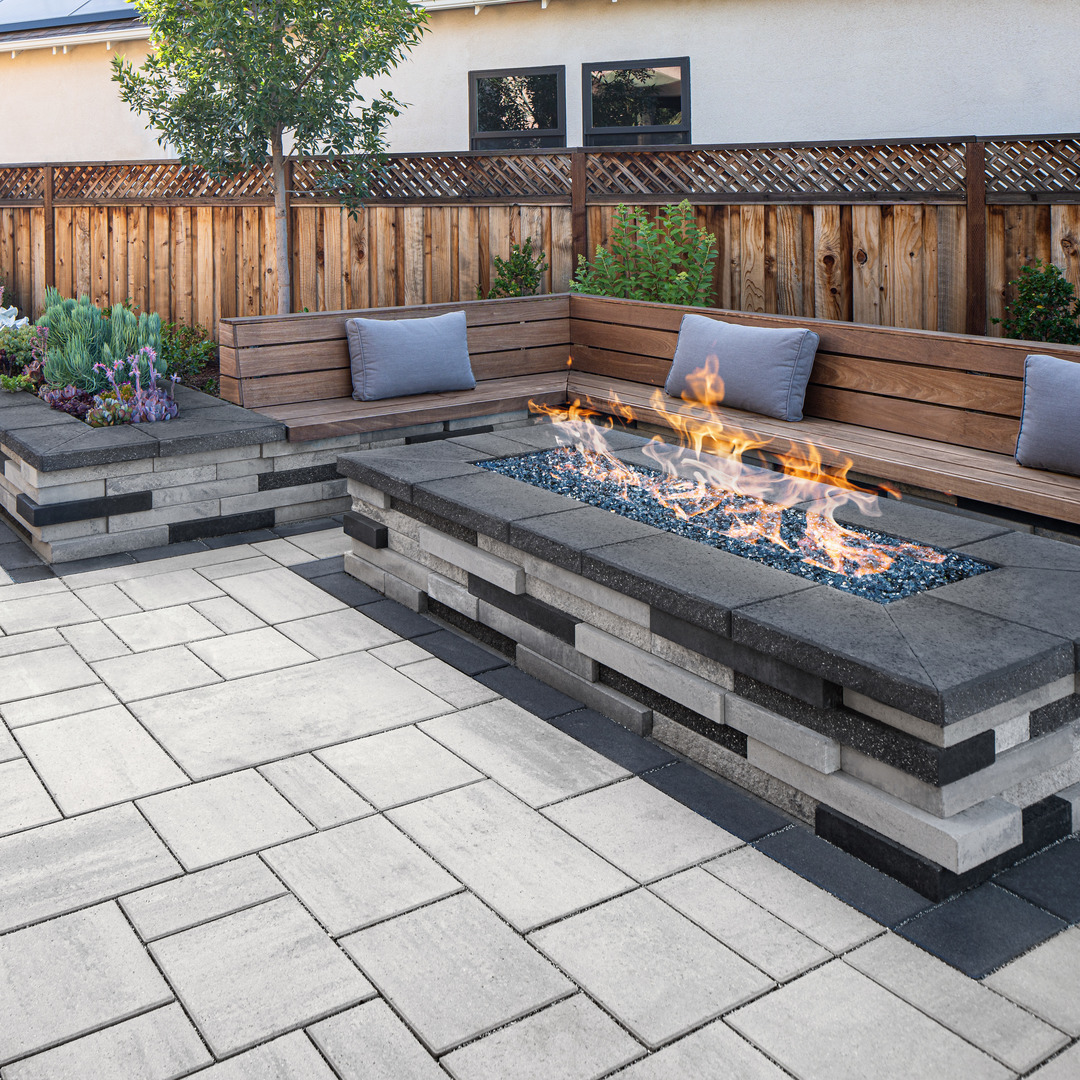If you’ve ever noticed a white, chalky residue forming on your patio pavers or retaining wall blocks, you’ve likely encountered efflorescence — a natural phenomenon that often raises concerns for both homeowners and contractors alike.
Whether you're a landscape contractor troubleshooting after a recent install or a homeowner wondering why your brand-new patio has white stains, this guide will walk you through what causes efflorescence, how to remove it, and what to ask or do next.
What Is Efflorescence?

Efflorescence is a white, powdery substance that appears on the surface of concrete, brick, or stone pavers. It forms when water-soluble salts within the material migrate to the surface, often after exposure to moisture or rainfall. As the water evaporates, it leaves behind a visible white residue.
Efflorescence is common — and temporary. It is not a defect in the product or installation but rather a natural reaction that can occur in any cement-based product.
What Causes Efflorescence?
Understanding the source is key to long-term prevention. Efflorescence is triggered by three main factors:
- Moisture: Water is the vehicle that dissolves salts inside the paver or wall block.
- Salts: Naturally present in cement-based products or surrounding materials.
- Migration: As moisture travels to the surface, it brings the salts with it.
This means efflorescence can occur after installation, during wet seasons, or when landscaping irrigation isn’t properly directed.
How Long Does Efflorescence Last?
In most cases, efflorescence fades naturally over time as the soluble salts are depleted. Depending on climate and water exposure, this process can take weeks or even a few months.
But for homeowners looking to restore the rich color of their hardscape sooner — or for contractors preparing for a project reveal — there are effective ways to speed up the process.
How to Remove Efflorescence from Pavers
For Contractors: Cleaning Efflorescence the Right Way

When it comes to removing efflorescence on pavers, a professional-grade efflorescence cleaner is your best friend. At Techo-Bloc, we recommend starting with a soft nylon brush and a water rinse. In many cases, this is enough to lift the salt deposits from the surface.
For more stubborn stains, use a concrete-safe, paver-safe cleaner such as:
These specialized products are designed to dissolve salt and mineral buildup without damaging the surface when used correctly.
Here’s a step-by-step guide:
- Let the project cure. Avoid cleaning too soon. Wait at least 60 days after installation to let the pavers stabilize and efflorescence fully appear.
- Pre-wet the surface. This helps prevent deep penetration of the cleaner and ensures more even results.
- Test a small area first. Choose a hidden corner to ensure the solution works well and doesn’t alter the finish.
- Apply cleaner as directed. Follow the manufacturer’s dilution guidelines and dwell times.
- Scrub and rinse thoroughly. Use a stiff nylon brush or pressure washer (low PSI) to agitate the surface and remove residue.
💡 Pro tip: These cleaners are acidic and must be handled with care. Always wear PPE (gloves, eye protection), follow the label for proper dilution, and never allow the product to dry on the surface.
For Homeowners: What You Can Do
If you’re noticing white stains on your patio or walkway, don’t panic. Efflorescence is a cosmetic and temporary issue. But before scrubbing it yourself, we recommend reaching out to your contractor with these questions:
- Has the surface fully cured (60+ days)?
- Do you recommend cleaning it yet, or waiting for it to resolve naturally?
- Which product will you use to clean it and is it safe for my pavers?
- Are you planning to seal the surface after cleaning?
Letting your contractor lead the charge ensures the surface is treated properly without damage and that your hardscape investment stays protected.
Can You Prevent Efflorescence?
While it’s difficult to prevent entirely, you can reduce the chances of efflorescence appearing by:
- Ensuring proper drainage around the project to avoid standing water.
- Using polymeric sand in joints to reduce water infiltration.
- Sealing pavers with a breathable, professional-grade sealer after any cleaning.
- Choosing quality products like Techo-Bloc pavers, which are manufactured with controlled ingredients to minimize excess salt content.
Key Takeaways
- Efflorescence = white powdery stains on pavers caused by moisture and salt migration.
- It’s temporary and can be removed safely with the right approach.
- Start with a rinse and brush, escalate to Flexlock, Vana Trol, or Sure Klean 600 as needed.
- Contractors should wait at least 60 days and test before cleaning.
- Homeowners should ask their contractor about the timeline, products used, and whether sealing is recommended.
Need More Help?
Want to learn more about paver maintenance, how to clean concrete stains, or find efflorescence-safe products? Discover our Care & Maintenance Guide or visit your local Techo-Bloc Dealer for product support and expert advice.

.jpg)
